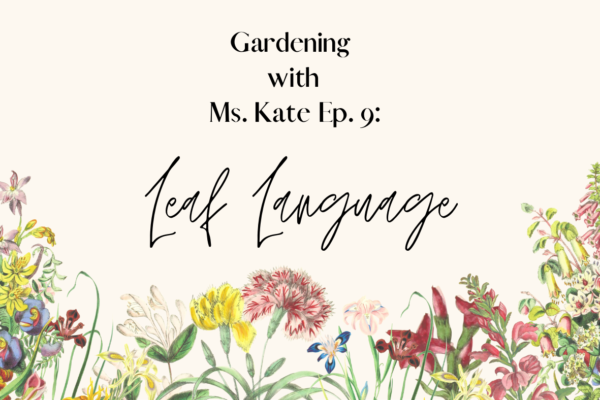
How do trees, shrubs, and other plants talk to each other? Through their leaves! You thought I was going to make a pun, didn’t you? Joke is on you, I couldn’t think of any!
Hi, welcome to Gardening with Ms. Kate, a series where I share tips and tricks on how to take care of plants! In today’s session, we will talk about how to read your leaves!
“Read my leaves?”, you ask? Yes, leaves are a way that our plants show what is going on with them. Are they parched? Sunburnt? Rootbound? Infested? This can all be found when looking at the leaves, and the goal is to teach you, dear readers, how to understand what they mean!
Leaves are one of the most important parts of a plant’s body. Without them, the plant would starve from the lack of chlorophyll, and in turn, would not be able to photosynthesize.
What is chlorophyll? It is the green pigment found in the leaves of plants, and it helps feed the plant through the process of photosynthesis, which generates sunlight into energy.
Sometimes, leaves get burnt from the Sun, just like we can. Chlorophyll is, in a way, sunscreen for plants, but like any brand, it has its limitations. The same goes for chlorophyll.

The image above shows the tell-tale sign of a singed leaf. The leaf has brown spots or is edged in brown, and the texture is dry to the touch. Someone needs to get this poor fiddle leaf fig on ice! If this happens, move your plant in a less harsh light. You can leave the burnt leaf for the plant to resolve on its own (the leaf will start to die, and the energy will go back to the plant), or you can prune the injury, which reduces stress on the plant.
Overwatering your plant is just as harmful as singeing their leaves. Overwatering can cause root rot which, if left untreated, can damage the plant beyond repair. What is the sign that your plant is overwatered? For leafed plants (ex: peace lilies), they will yellow on the edges as well as wilt, as seen below.

As you can see, we have a bunch of sad lettuce. How do we remedy this? If you realize that you have accidentally overwatered, try to dry out the soil with a towel. Take the plant out of the pot, and let the towel do the work!
So, we have gone over light and water affecting our chlorophyll-ed friends, but what about insects? Yes, bugs can harm your plants as well. In this post, I will focus on one pest in particular; spider mites. Is it a spider? No, it is called that because of the cobweb bulbs they leave when established in a plant. Here is a picture to show you what I mean.

Gross, right? They are frustrating to get rid of, too. I have lost numerous plants to these guys. Ways to help reduce the risk of infestation: wash your leaves with dish or insecticidal soap, spray with neem oil, and take a moment to look over your plants. You also may need to prune the affected leaves if it gets too bad. Repetition is very important to make sure you get rid of all pests, not just spider mites!
It takes a while to note changes in your leaves, and what they mean. I know I saw these signs and misread them. Gardening is all about patience and fluidity when checking your plants. I hope these images and tips will help you gain more confidence with your plants!
For more information about leaf language, click here, to watch a cute video of a fox learning about why the trees change color in Autumn!
Happy gardening, gang!





